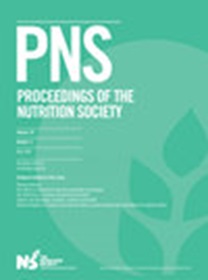了解南安普顿大学医院 "老年人用药 "病房低摄入量脱水的性质和规模:混合方法研究
IF 4.5
2区 医学
Q1 NUTRITION & DIETETICS
引用次数: 0
摘要
住院期间脱水是一个令人严重关切的问题,尤其影响到老年人(1)。与病理变化和痴呆症等疾病相关的衰老过程使老年人特别容易出现慢性和急性脱水(1,2)。最近的研究表明,在老年住院患者中,低摄入量脱水的常规症状和体征可能并不一致,从而导致漏诊或错误的评估。低摄入量脱水可导致跌倒、便秘、谵妄、呼吸道和泌尿道疾病,甚至死亡,从而造成严重的发病率(2,3)。早期诊断低摄入量脱水具有挑战性,会导致治疗延误,进一步加重脱水的不良后果 (1,3)。有必要确定南安普顿大学医院(UHS)"老年人医疗"(MOP)病房检测和处理低摄入量脱水的范围和做法。本研究的主要目的是探讨南安普敦大学医院 MOP 病房在检测和管理老年住院病人低摄入量脱水方面的现行做法和挑战。本研究采用顺序、解释性混合方法设计,在南安普敦大学医院所有 MOP 病房进行了为期一个月的前瞻性病历回顾研究(第一阶段)。研究对象包括 50 名因各种原因入住内科病房的 65 岁及以上成年人,他们目前被视为 "最佳出院医疗状态"(MOFD)。定量研究包括审查当地水合评估工具的完成情况以及高危患者水合和液体平衡图表的正确记录情况。定性部分(第二阶段)包括对 10 名参与者(4 名医生和 6 名护士,工作年限从 4 年到 12 年不等)进行半结构化访谈,以了解医院员工对水合护理的看法、障碍和促进因素。定量阶段发现,所有患者都有脱水风险,并通过水合风险评估进行了评估,在早班、晚班和夜班期间都进行了水合图表审查。有 20% 的患者没有在入院后 24 小时内进行水合评估,在不同班次中也有一些缺失。大部分红色类别患者的 24 小时体液平衡表都没有填写(开始 24 小时体液平衡表)。定性研究结果表明,工作人员"(1)对水合的经验知识了解老年人脱水的风险","(2)由于资源问题,脱水评估和诊断存在困难","(3)工作人员水平和技能方面的挑战",以及(4)患者属性导致脱水评估困难。研究结果强调,有必要加强培训、提高意识并制定标准化方案,以优先考虑医护人员的水合护理,并为老年住院患者提供最佳的水合护理。本文章由计算机程序翻译,如有差异,请以英文原文为准。
Understanding the nature and scale of low-intake dehydration on ‘Medicine for Older People’ wards at University Hospital Southampton: A mixed-methods study
Dehydration during hospital stays is a significant concern, particularly affecting older adults(1) . The ageing process associated with pathological changes and conditions such as dementia makes older adults especially vulnerable to both chronic and acute dehydration (1,2) . Recent studies indicate that conventional signs and symptoms of low-intake dehydration may not consistently indicate its presence in older inpatients, leading to missed or incorrect assessments. It can result in significant morbidity through falls, constipation, delirium, respiratory and urinary tract disorders, and even death (2,3) . Diagnosing low-intake dehydration at the early stage is challenging, leading to treatment delays which further compound the negative consequences of dehydration (1,3) . There is a need to determine the scope and practice of detecting and managing low-intake dehydration in ‘Medicine for Older People’ (MOP) wards at University Hospital Southampton (UHS). The primary aim of this study was to explore the current practices and challenges in detecting and managing low-intake dehydration in older inpatients within the MOP wards at UHS.Using a sequential, explanatory mixed-method design, a prospective chart review study (phase 1) was conducted at all the MOP wards at UHS over one month. The study included 50 adults aged 65 and above admitted to the medical wards for various reasons and now deemed ‘Medically Optimised for Discharge’ (MOFD). The quantitative aspect involved reviewing the completion of a local hydration assessment tool and the proper documentation of hydration and fluid balance charts for at-risk patients. The qualitative component (phase 2) consisted of semi-structured interviews with 10 participants—four doctors and six nurses with years of experience ranging from 4 to 12 years—to understand the perceptions of hospital staff on hydration care, its barriers and facilitators.The quantitative phase found that all patients were at risk for dehydration and underwent assessment through the hydration risk assessment, with hydration chart reviews during early, late, and night shifts. 20% did not have hydration assessment within 24h of admission and there were some missing reviews during various shifts. Most 24-hour fluid balance sheets were not completed for patients in the red category (start 24-hour fluid balance chart). Qualitative findings revealed that staff had ‘(1) experiential knowledge of hydration understanding the risks of dehydration in older adults’, ‘(2) difficulty in dehydration assessment and diagnosis due to resources’ and ‘(3) challenges related to staff levels and skills’ as well as (4) patient attributes contributing to difficulty in dehydration assessment.The mixed-methods study underscores the importance of addressing low-intake dehydration in older inpatients on MOP wards and highlights gaps in current practices. The findings emphasise the need for improved training, awareness, and standardised protocols to prioritise hydration care among healthcare professionals and provide optimal hydration care for older inpatients.
求助全文
通过发布文献求助,成功后即可免费获取论文全文。
去求助
来源期刊
CiteScore
15.50
自引率
0.00%
发文量
190
审稿时长
6-12 weeks
期刊介绍:
Proceedings of the Nutrition Society publishes papers and abstracts presented by members and invited speakers at the scientific meetings of The Nutrition Society. The journal provides an invaluable record of the scientific research currently being undertaken, contributing to ''the scientific study of nutrition and its application to the maintenance of human and animal health.'' The journal is of interest to academics, researchers and clinical practice workers in both human and animal nutrition and related fields.

 求助内容:
求助内容: 应助结果提醒方式:
应助结果提醒方式:


